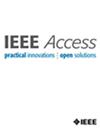GenAINet:通过知识转移和推理实现无线集体智能
IF 3.4
3区 计算机科学
Q2 COMPUTER SCIENCE, INFORMATION SYSTEMS
引用次数: 0
摘要
电信和通信网络有望为6G带来突破性的协同效应。通过无线网络连接生成式人工智能(GenAI)代理可以潜在地释放集体智能(CI)的力量,并为人工通用智能(AGI)铺平道路。然而,当前的无线网络被设计为“数据管道”,不适合容纳和利用GenAI的功能。在本文中,我们提出了一个GenAINet框架,在这个框架中,分布式GenAI智能体通过交流知识(事实、经验和方法)来完成任意任务。我们首先为单个GenAI代理提出了一个体系结构,然后提供了一个集成GenAI功能的网络体系结构来管理网络协议和应用程序。在此基础上,我们通过提出一个语义原生的GenAINet来研究有效的通信和推理问题。具体来说,GenAI智能体从异构原始数据中提取语义,建立并维护一个知识模型,表示知识块之间的语义关系,由GenAI模型检索,用于规划和推理。在这种模式下,可以根据目标任务的复杂程度灵活地实现不同层次的协作。此外,我们还进行了两个案例研究,通过无线设备查询,我们证明了提取、压缩和转移公共知识可以提高查询精度,同时降低通信成本;在无线电源控制问题中,我们证明了分布式智能体可以通过协作推理独立完成一般任务,而不需要预先定义通信协议。最后,我们讨论了在6G网络中应用大型语言模型(llm)的挑战和未来的研究方向。本文章由计算机程序翻译,如有差异,请以英文原文为准。
GenAINet: Enabling Wireless Collective Intelligence via Knowledge Transfer and Reasoning
genai and communication networks are expected to have groundbreaking synergies for 6G. Connecting Generative Artificial Intelligence (GenAI) agents via a wireless network can potentially unleash the power of Collective Intelligence (CI) and pave the way for Artificial General Intelligence (AGI). However, current wireless networks are designed as a “data pipe” and are not suited to accommodate and leverage the power of GenAI. In this paper, we propose the GenAINet framework in which distributed GenAI agents communicate knowledge (facts, experiences, and methods) to accomplish arbitrary tasks. We first propose an architecture for a single GenAI agent and then provide a network architecture integrating GenAI capabilities to manage both network protocols and applications. Building on this, we investigate effective communication and reasoning problems by proposing a semantic-native GenAINet. Specifically, GenAI agents extract semantics from heterogeneous raw data, build and maintain a knowledge model representing the semantic relationships among pieces of knowledge, which is retrieved by GenAI models for planning and reasoning. Under this paradigm, different levels of collaboration can be achieved flexibly depending on the complexity of targeted tasks. Furthermore, we conduct two case studies in which, through wireless device queries, we demonstrate that extracting, compressing and transferring common knowledge can improve query accuracy while reducing communication costs; and in the wireless power control problem, we show that distributed agents can complete general tasks independently through collaborative reasoning without predefined communication protocols. Finally, we discuss challenges and future research directions in applying Large Language Models (LLMs) in 6G networks.
求助全文
通过发布文献求助,成功后即可免费获取论文全文。
去求助
来源期刊

IEEE Access
COMPUTER SCIENCE, INFORMATION SYSTEMSENGIN-ENGINEERING, ELECTRICAL & ELECTRONIC
CiteScore
9.80
自引率
7.70%
发文量
6673
审稿时长
6 weeks
期刊介绍:
IEEE Access® is a multidisciplinary, open access (OA), applications-oriented, all-electronic archival journal that continuously presents the results of original research or development across all of IEEE''s fields of interest.
IEEE Access will publish articles that are of high interest to readers, original, technically correct, and clearly presented. Supported by author publication charges (APC), its hallmarks are a rapid peer review and publication process with open access to all readers. Unlike IEEE''s traditional Transactions or Journals, reviews are "binary", in that reviewers will either Accept or Reject an article in the form it is submitted in order to achieve rapid turnaround. Especially encouraged are submissions on:
Multidisciplinary topics, or applications-oriented articles and negative results that do not fit within the scope of IEEE''s traditional journals.
Practical articles discussing new experiments or measurement techniques, interesting solutions to engineering.
Development of new or improved fabrication or manufacturing techniques.
Reviews or survey articles of new or evolving fields oriented to assist others in understanding the new area.
 求助内容:
求助内容: 应助结果提醒方式:
应助结果提醒方式:


